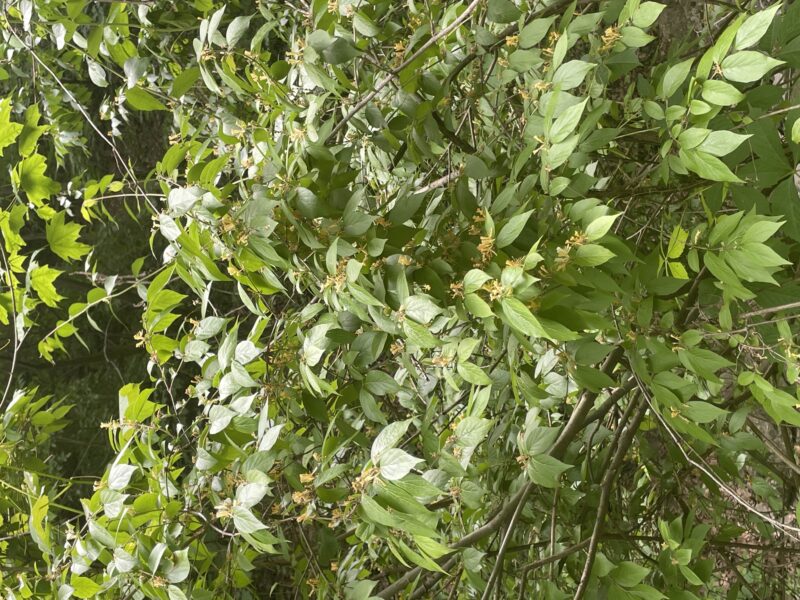One of the things I really enjoyed about this class is being able to pick a site to go and explore. I have lived off campus in Columbus for almost 3 years and I did not realize there was such a cool site literally in the city’s backyard. It is a little odd because there is so much civilization and in the middle, just a little park and hiking area. Right off of Hudson street is where it is located.

Before I get into some of the flora there, I’m going to show you one to avoid. We’re all aware about poison ivy, but literally until I took this class I actually had no clue what I was looking for. In all honesty I thought that every crawling vine was poison ivy. Well, knowing now that it’s trifoliolate and sometimes has white berries really helped! The leaves are also toothy.
!!! POISON IVY !!! (Toxicodendron radicans)
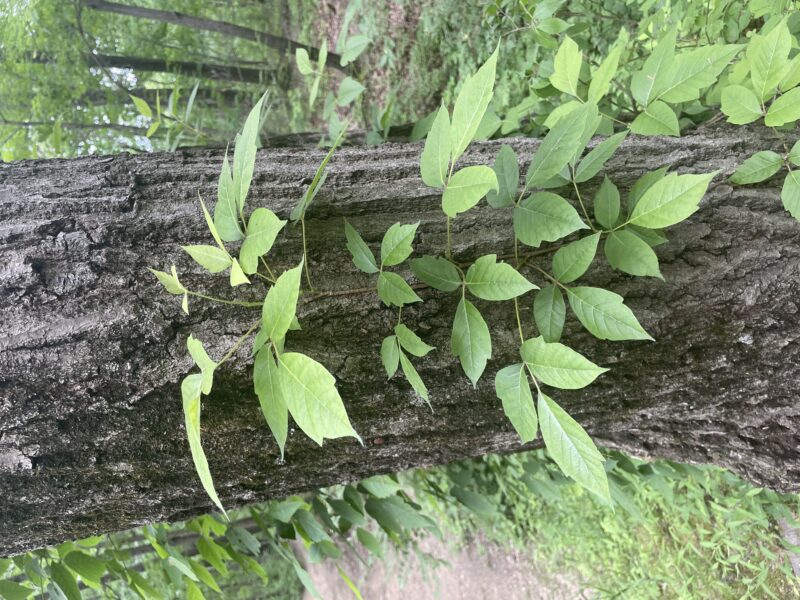
As we can see the vine itself is woody and the leaflets are trifoliolate and divided. There are also some slight toothing to the leaflets as well!
✿.*❊ Flowers ❊ *.✿
The only thing that really brings the interest in plants. We all love a good flower!
Rough cinquefoil (Potentilla norvegica)
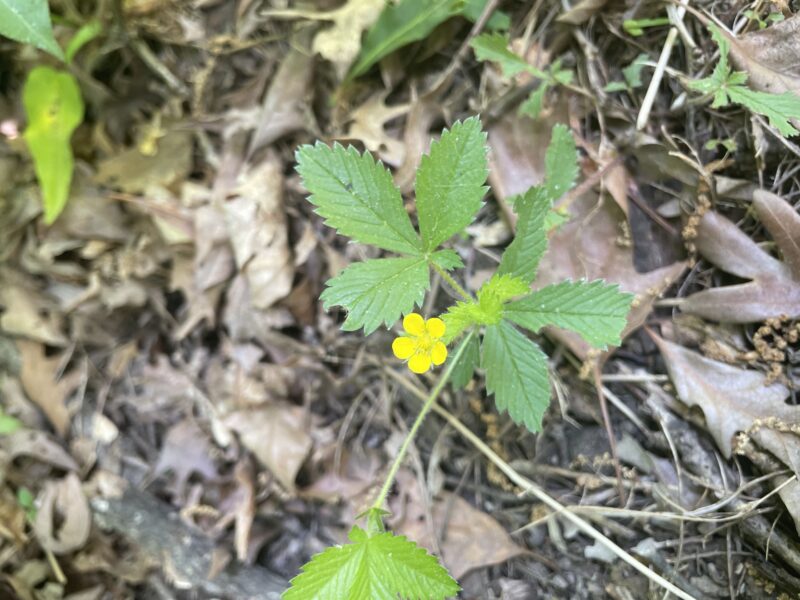
This little beauty is actinomorphic with three divided, alternate leaflets that are toothed! The rough cinquefoil is characterized by hairy or fuzzy stems! It is in the rose family so it has a fused calyx, corolla, and androecium with a superior ovary. It also contains a syncarpous gynoecium. This specific flower is singular in floral pattern, but generally it is in cymes. It produces those little red berries you spot in your backyard!. I spotted this little guy hiking up a hill next to a tree!
Dame’s violet (Hesperis matronalis)
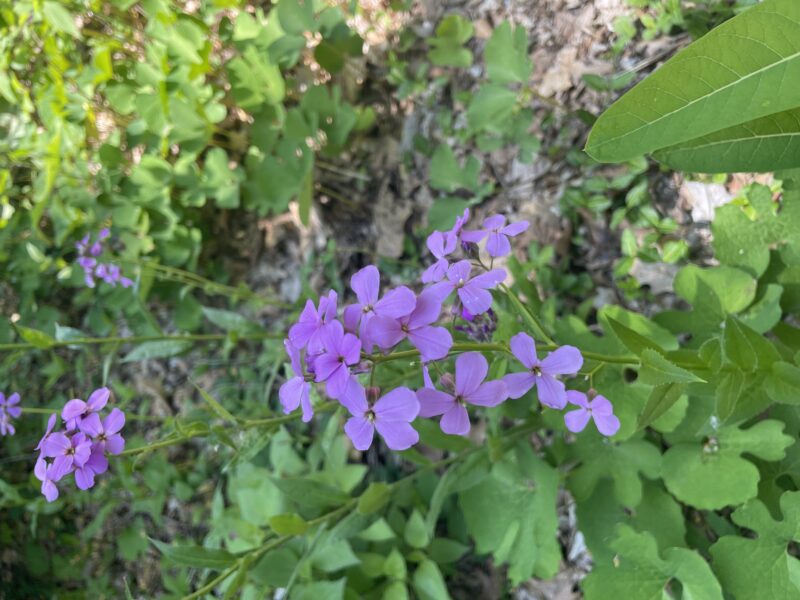
Dame’s violet was so cool! I saw some instances of codominance with this flower in the wild! It is a four petaled (member of the brassicaceae) flower with arrow-shaped and somewhat toothy leaves! The flowers are organized in racemes and the leaves are alternate. Members of the brassicaceae have an adroecium with 6 stamens, 4 long and two short. It has a superior ovary and produces siliques or silicles from a syncarpous gynoecium. I saw this plant on flat plain of a hill!
Tansy ragwort (Senecio jacobaea)
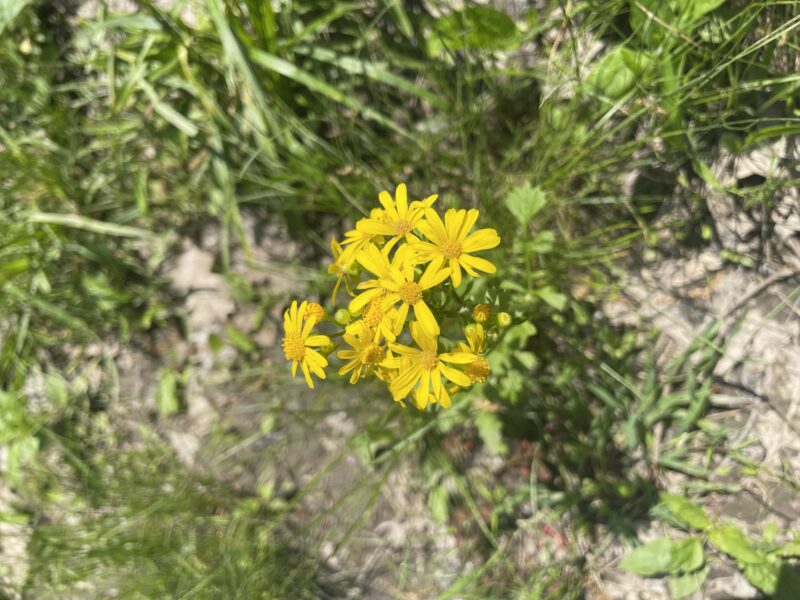
This specimen was also found on that plain ol’ hill. I had to get our favorite (somewhat invasive?) member of the asteraceae! The tansy ragwort is much like the golden ragwort, the different being the shape of its leaves. There is not a large basal leaf and the tansy leaves sort of seem like they’ve been torn up. members of the asteraceae have inferior ovaries with zygomorphic corollas. Of course in this case we have capituli, but they’re organized into a corymb. These flowers produce achenes!
Hairy solomon’s seal (Polygonatum pubescens)
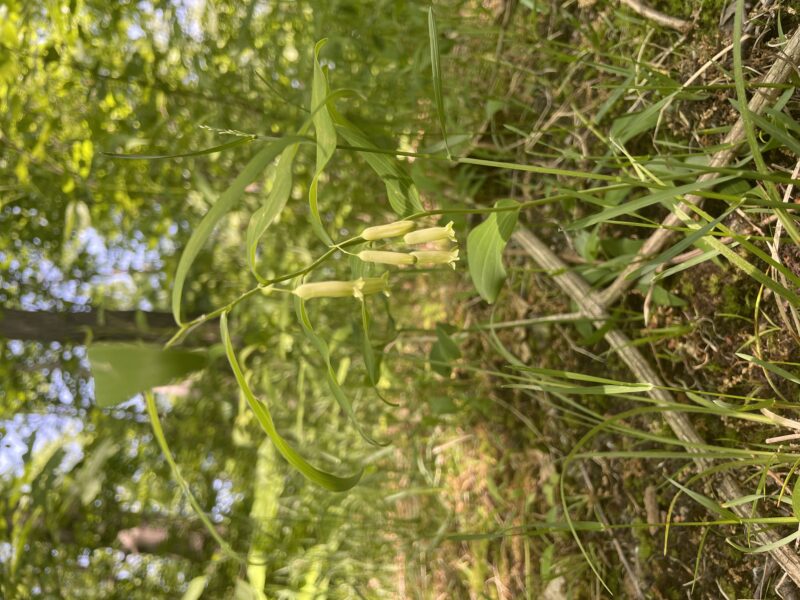
This was also another spectacular find! They are so small and hidden that i’m surprised I got them! This member of the liliaceae has alternate and smooth leaves. I classified this as a hairy seal because there are only two flowers per cluster. It has a syncarpous gynoecium with three carpels and a superior ovary. I want to say that these flowers are arranged in a raceme. the fruit they produce is a blue to black berry!
So, those were all pretty cool flowers/plants! Now we have to show the uncool ones 🙁 . It’s no surprise to see similar invasive species around like one’s I have reported earlier.
Boo Hiss plants
Japanese honeysuckle (Lonicera japonica)
This sucker comes from Japan, surprise! It pretty much suffocates other herbaceous plants around it. How inappropriate! The best way to control them is to uproot them, clip the vines and even chemicals.
Multiflora rose (Rosa multiflora)
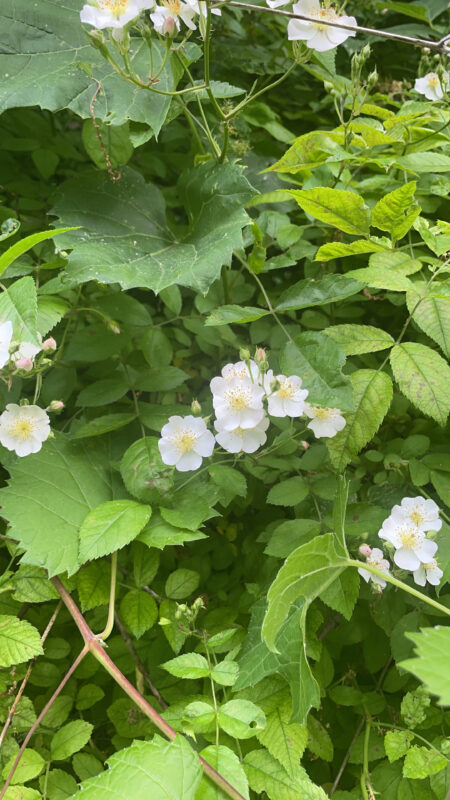
Our multiflora rapscallion has pretty similar qualities to the Japanese honeysuckle. The foliage gets so dense that it outcompetes the poor plants around it. It is also controlled in a similar way! Clipping, mowing, plucking and chemicals!
Garlic mustard (Alliaria petiolata)
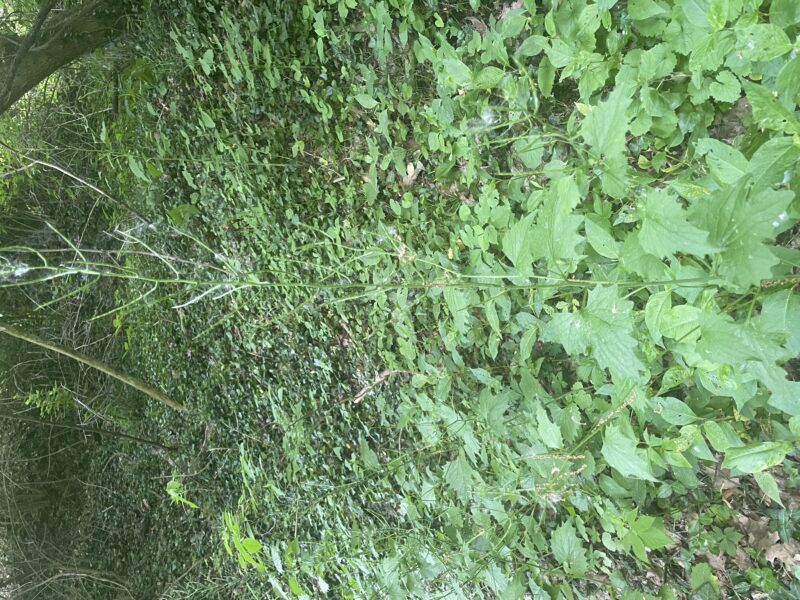
Garlic mustard is from Europe! It is believed to have been brought to the U.S. for medicinal purposes! This plant is easily uprooted so control doesn’t seem so bad! You can uproot this or clip prior to flowering.
Jewelweed (Impatiens capensis)
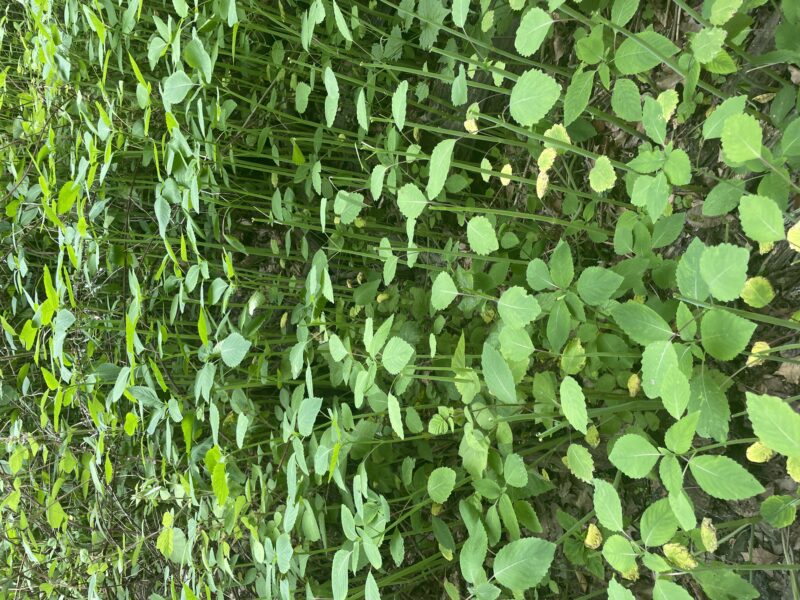 I guess somebody really beat me to the punch. This plant was not really on the list that we were provided, however they were everywhere. So I’m kind of glad I was able to find an invasive species all on my own. I learned that it is a jewelweed, but also called touch me nots. As you can see, pretty much all of these have been clipped as a control. I was not able to get the flowers, but happy someone gave the other plants a chance! Apparently people really like them because of their flowers, but they have the capability of getting out of control, so clipping and mowing is suggested!
I guess somebody really beat me to the punch. This plant was not really on the list that we were provided, however they were everywhere. So I’m kind of glad I was able to find an invasive species all on my own. I learned that it is a jewelweed, but also called touch me nots. As you can see, pretty much all of these have been clipped as a control. I was not able to get the flowers, but happy someone gave the other plants a chance! Apparently people really like them because of their flowers, but they have the capability of getting out of control, so clipping and mowing is suggested!
It’s pretty cool to find where fruits come from right? I have learned so much about fruits, especially what are actually fruits. Like how a tomato is actually a berry. Unfortunately, this class was scheduled too soon to see many fruits out. So we also know some families!
Fruits and families
Sugar maple (Acer saccharum)
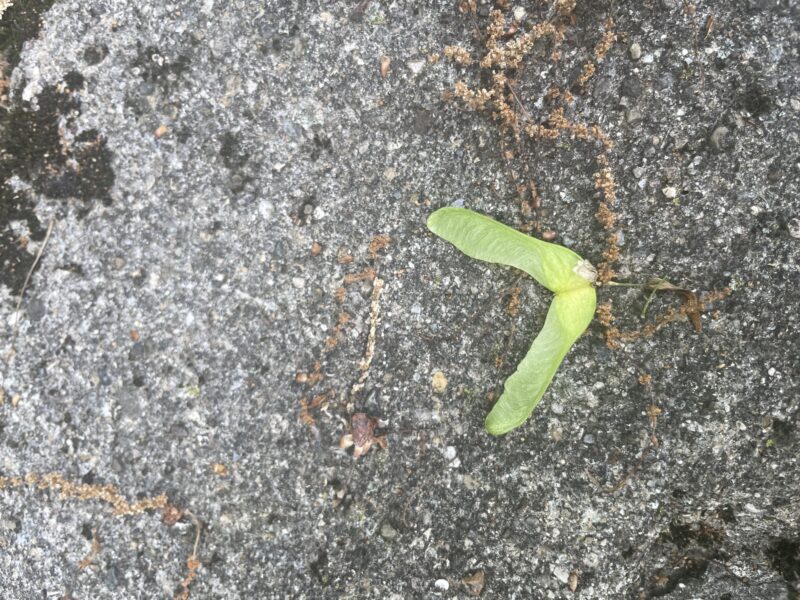
The maple family is known for its double-winged samaras! Cool stuff!
White mulberry (Morus alba)
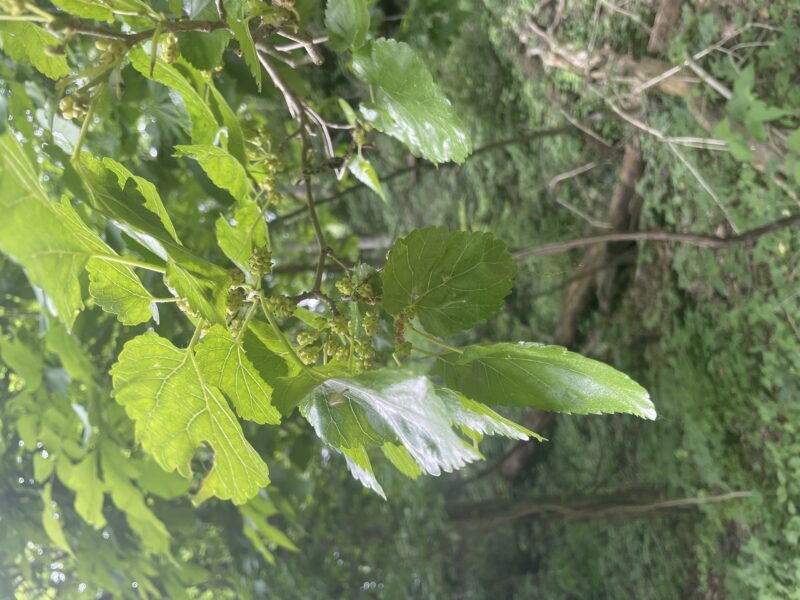
Look at the little drupelets. Of course these berries are not mature, but it’s still enough to identify!
American sycamore (Platanus occidentalis)
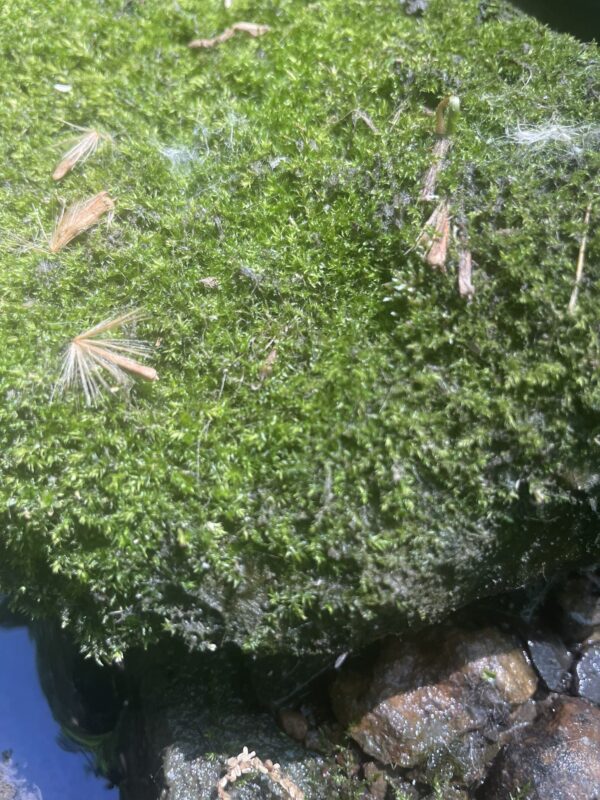
Yes, I know this fruit was conveniently placed on a moss, but this is not about the moss. This fruit (achenes) comes from a bigger ball-like structure on the sycamore! They were everywhere!
Redbud (Cercis canadensis)
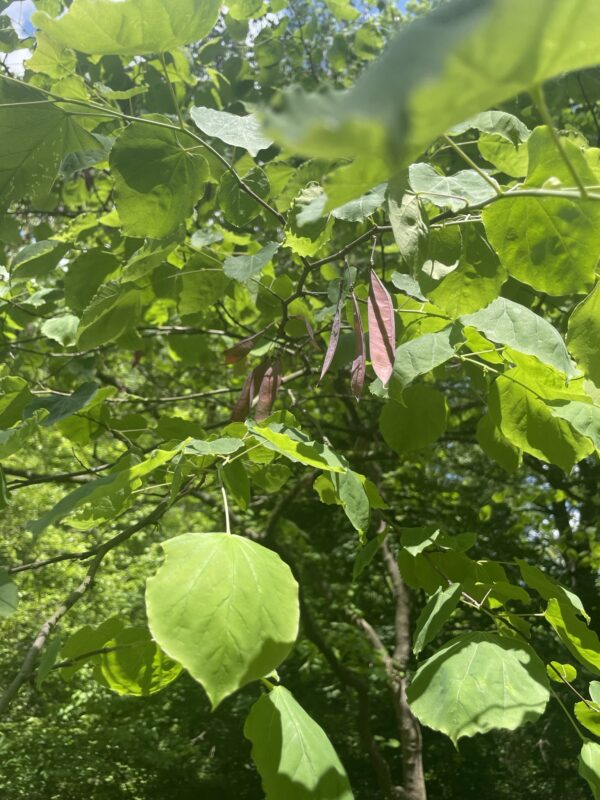
As you can see, the redbud has red/brown pods or legumes!
So through this botanical journey, we also made some lichable friends!. I think I liked them the moss!
Mosses and Lichens
Baby tooth moss (Plagiomnium)
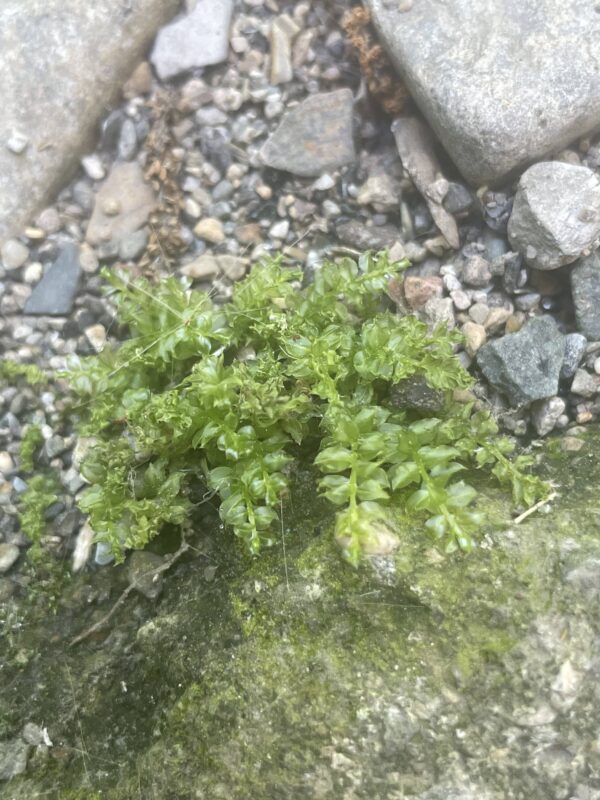
Poodle moss (Anomodon)
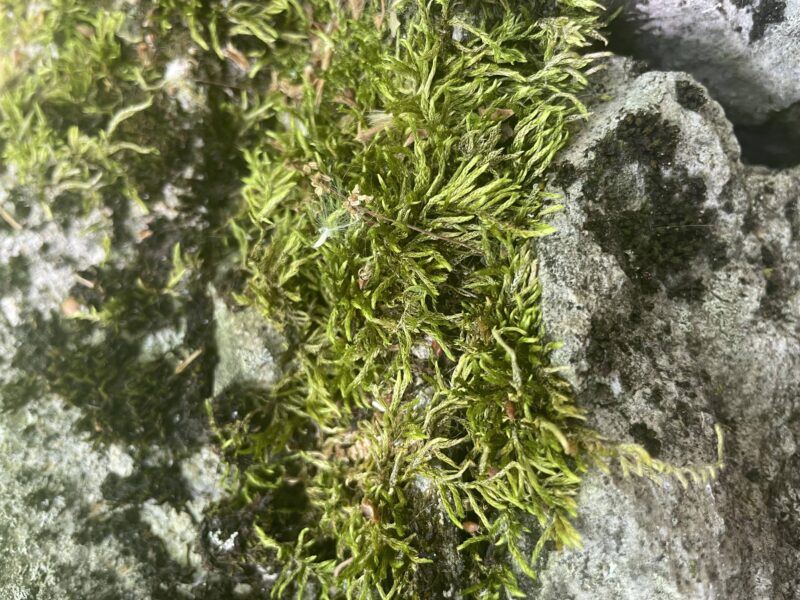
Common Greenshield Lichen (Flavoparmelia caperata)
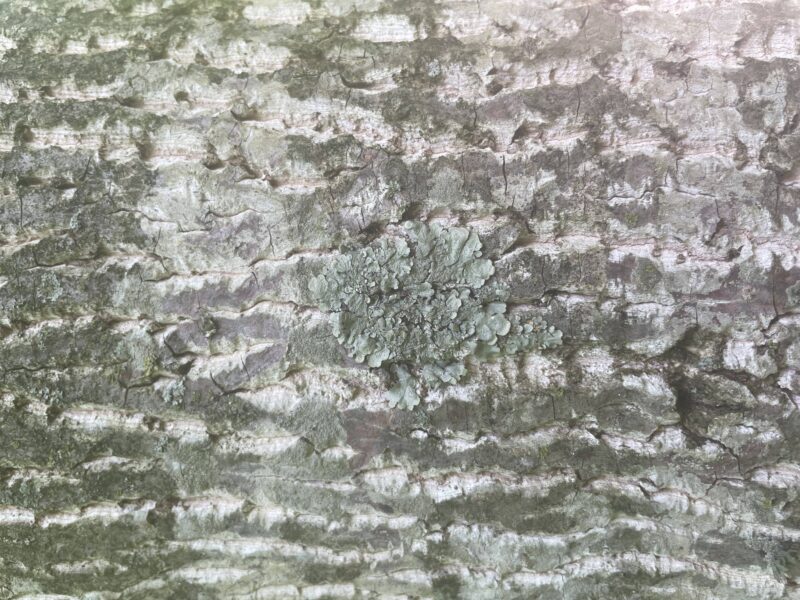
Lemon lichen (Candelaria concolor)
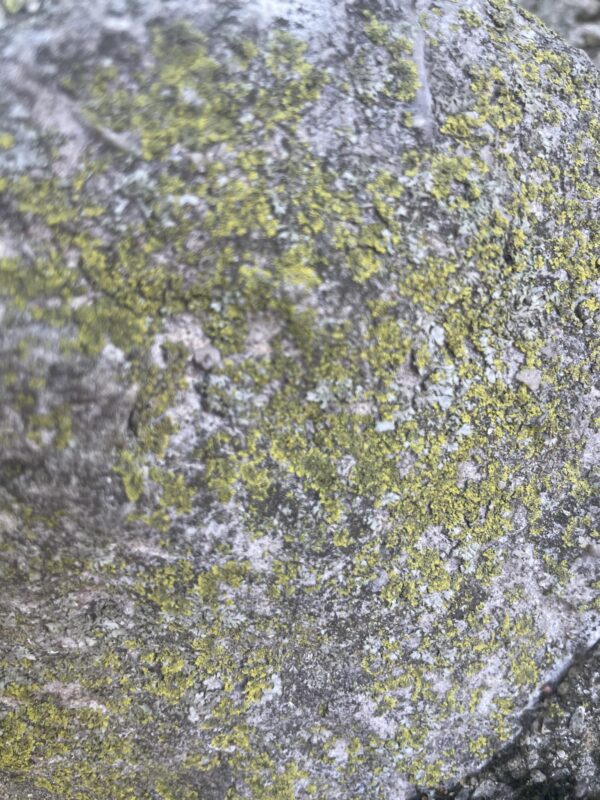
Sources:
https://www.illinoiswildflowers.info/weeds/plants/rgh_cinquefoil.htm
https://plants.ces.ncsu.edu/plants/hesperis-matronalis/
https://www.maine.gov/dacf/mnap/features/invasive_plants/impatiens_glan.htm#:~:text=Severely%20Invasive.,or%20in%20whorls%20of%203.

